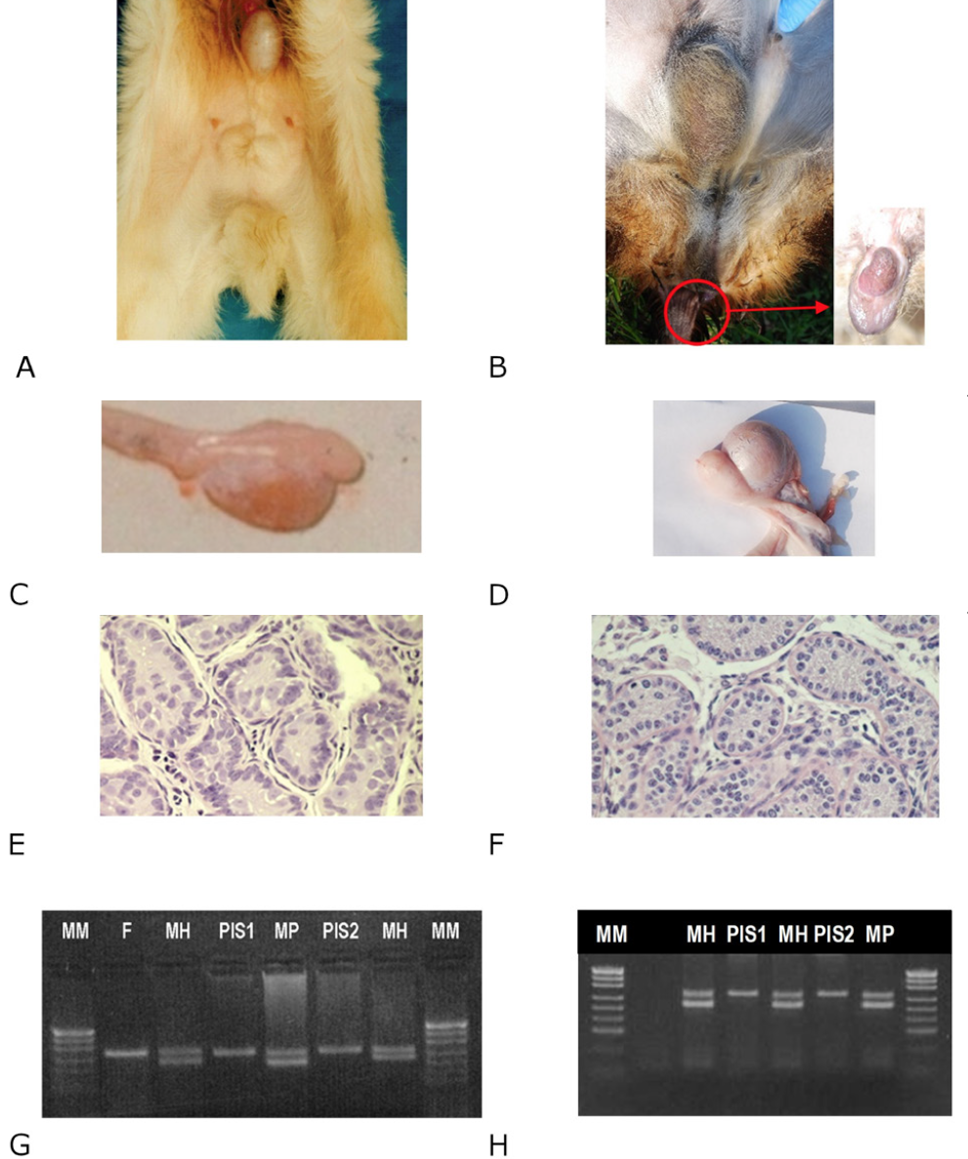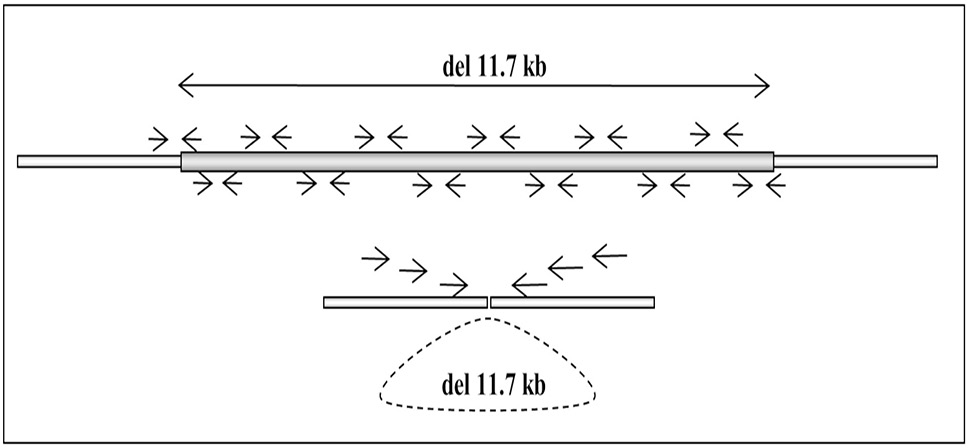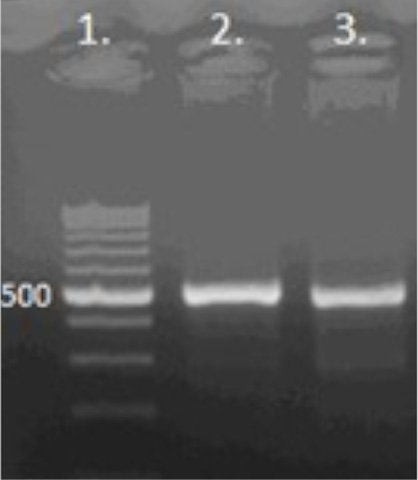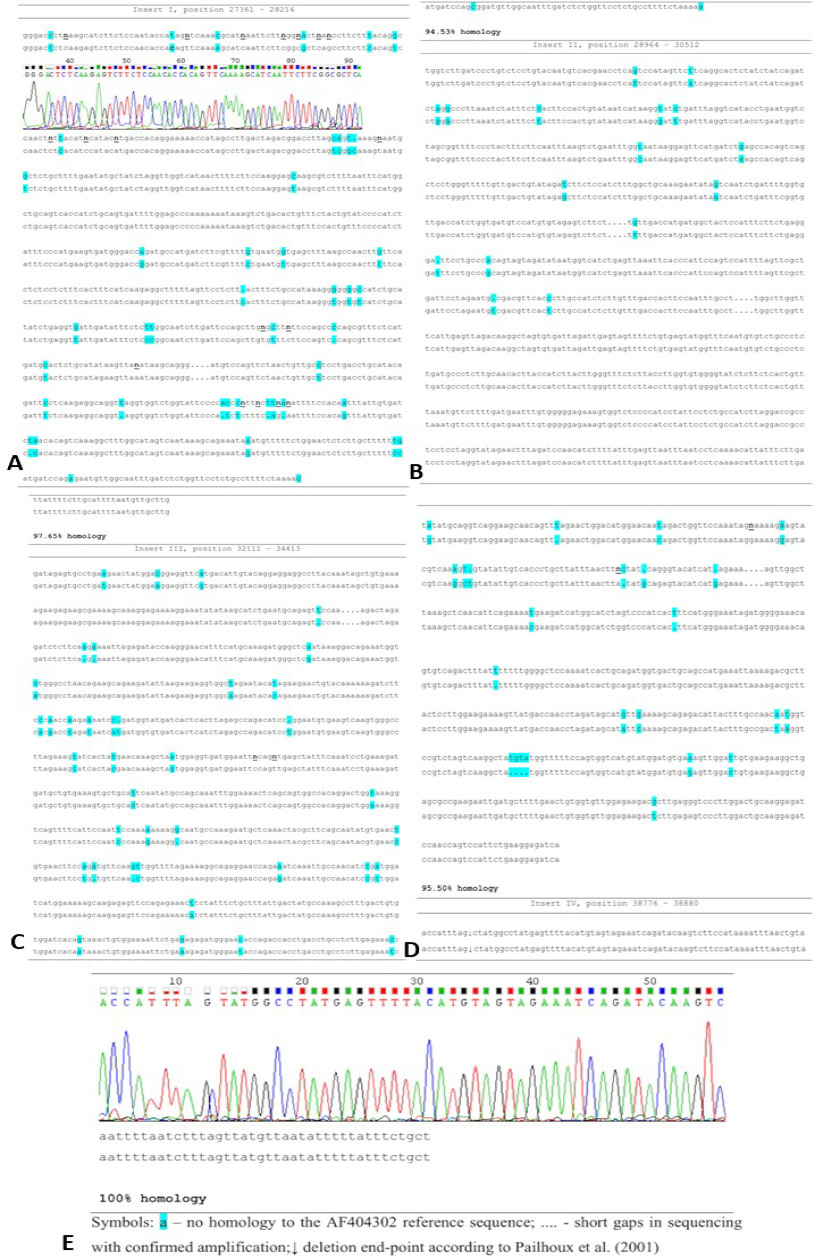Polled Intersex Syndrome and Polledness in Goats: Molecular Aspects
Polled Intersex Syndrome and Polledness in Goats: Molecular Aspects
Iwona Szatkowska1, Jan Udała2, Daniel Zaborski3*, Ewa Czerniawska-Piątkowska1, Wilhelm Grzesiak3, Małgorzata Wasielewska1 and Jerzy Wójcik4
Phenotypic description of the PIS individuals (masculinization of external and internal genitalia, histological examination of the gonads) and a sex identification test (based on the AMGLX, AMGLY and SRY genes). A, Male-specific external genitalia; caudally displaced hypoplastic penis; absence of the urethral process; problems with urination. B, Male-specific external genitalia; one testis in the scrotum, the second one in the groin area; enlarged clitoris. C, Testes with epididymides. D, Testes with epididymides. E, In the testis of the animal, the seminiferous tubules lacked lumen and contained Sertoli cells and priomordial cells located on the basal lamina and occasionally in the center of the tubules. F, the seminiferous tubules lacked lumen and contained spermatogonia and Sertoli cells; the interstitial tissue with a small group of Leydig cells. G, AMGLX, AMGLY, MM, DNA ladder; F, female; MH, horned male; MP, polled male; PIS1 and PIS2, sex-reversed individuals; H – SRY, MM, DNA ladder; F, female; MH, horned male; MP, polled male; PIS1 and PIS2, sex-reversed individuals.
Experimental layout (the reference template containing only the flanking regions of the 11.7-kb PIS deletion).
PCR results for the identification of the PIS deletion: Lane 1: 100–1000-bp DNA ladder, lane 2: hermaphrodite, lane 3: hermaphrodite.
Deletion region (authors’ own work based on Paihoux et al., 2001); a: the PIS deletion with a marked LINE (in dark grey), repeated elements in the central part of the palindrome (in red), and the elements stabilizing the hairpin and binding to SRY (in black); b: the structure of the hairpin regulatory element; c: the PIS deletion with insertion regions identified in the present study in sex-reversed individuals (in grey).















